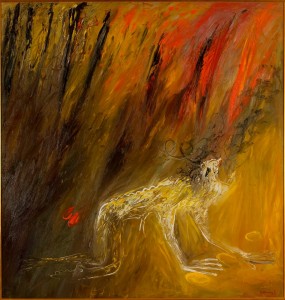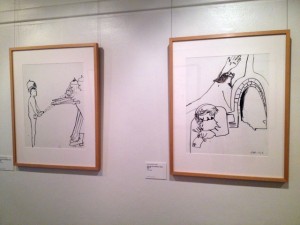Lonsdale Street Roasters
Saturday 13 July, 11.05 am
Brother: What do you want to do after breakfast?
Sister: I’m happy. Whatevs.
B: Good, because I’ve prepared an itinerary.
S: Let’s have it.
B: We start with a midday tour of Old Parliament House.
S: Who are you? Clark Griswold?
B: Don’t be like that. This is your first trip to Canberra. You should take the opportunity to explore the nation’s political heritage, beginning with the architectural bedrock of power and—
S: No way, man. I didn’t drive eight hours from Melbourne to visit parliamentary Sovereign Hill.
B: OK. How about Capital Hill? The nerve centre, the heart and soul of current policy and debate. The seat of our thriving democracy. There’s an exhibition of touch-screen kiosks where you can interact with senators!
S: You’ll find more heart and soul in a Nauruan mine shaft. Best minimise my interaction with senators and their seats.
B: We could do the 16 km lap of Lake Burley Griffin.
S: Old Parliament House it is.
—
Museum of Australian Democracy, Old Parliament House
Saturday 13 July, 1.05 pm
Brother: Oi. You’ve been in Arthur Boyd over an hour. Don’t you want to see the Magna Carta? Or Malcolm Fraser’s favourite biro?
Sister: Not really. Listen, thanks for bringing me here. I really, really like this exhibition.
B: What’s so good about it?
S: Well. The curatorial premise is uncomplicated but engaging: ‘an active witness’. Boyd is an exemplar of the empathetic, affected artist. Dissatisfaction with the inhumanity of the world is common, sure, but how many of us possess the determination and fortitude to respond meaningfully to that frustration, to shine light in areas of darkness, throughout our entire lives.
B: How’s about that picture in the next room, the one of the guy with his dick out, pissing at the firing squad. Is that an empathetic response to the inhumanity of the world?
S: It’s satirical. It’s one illustration within the artist’s career-long commitment to exposing the debauchery and grotesqueness of war.
B: Hmmm.
S: See this work, Nebuchadnezzar being struck by lightning. Nebuchadnezzar is a figure from the Old Testament. Boyd frequently drew on myth for inspiration. But here, in this painting, the latent subject matter is grander even than the biblical content.
B: Do you think he’s pissing, or … you know … ejaculating?
S: Who?
B: The guy in the picture, in front of the firing squad.
S: Why would he be ejaculating?
B: Why would he be pissing?
S: War is absurd. There’s no place in it for your sophisticated brand of Socratic questioning. Now, pay attention. He painted the work in front of you after witnessing a Vietnam war protester set fire to himself in London.
B: Jesus.
S: This is Boyd’s timeless exploration of political and human folly. It is as powerful an evocation of hubris, anguish and guilt as you will see in a painting. Take another look, before we go.
B: The work is a powerful symbol of humanity’s vanity and failure during a time of crisis.
S: That’s very good!
B: I’m just reading from the brochure.
S: Right.
B: Says here that Bob Hawke chose Boyd’s Interior with an open door, Shoalhaven to decorate his office. He thought it was ‘well suited to moments of inner calculation’.
S: I bet an advisor chose the work, and wrote that response for him.
B: Would you take that gig? Senior Cabinet art consultant?
S: Sure. I know just the works I’d hang.
Arthur Boyd: An active witness, Museum of Australian Democracy, Canberra, 8 May – 29 September 2013.



